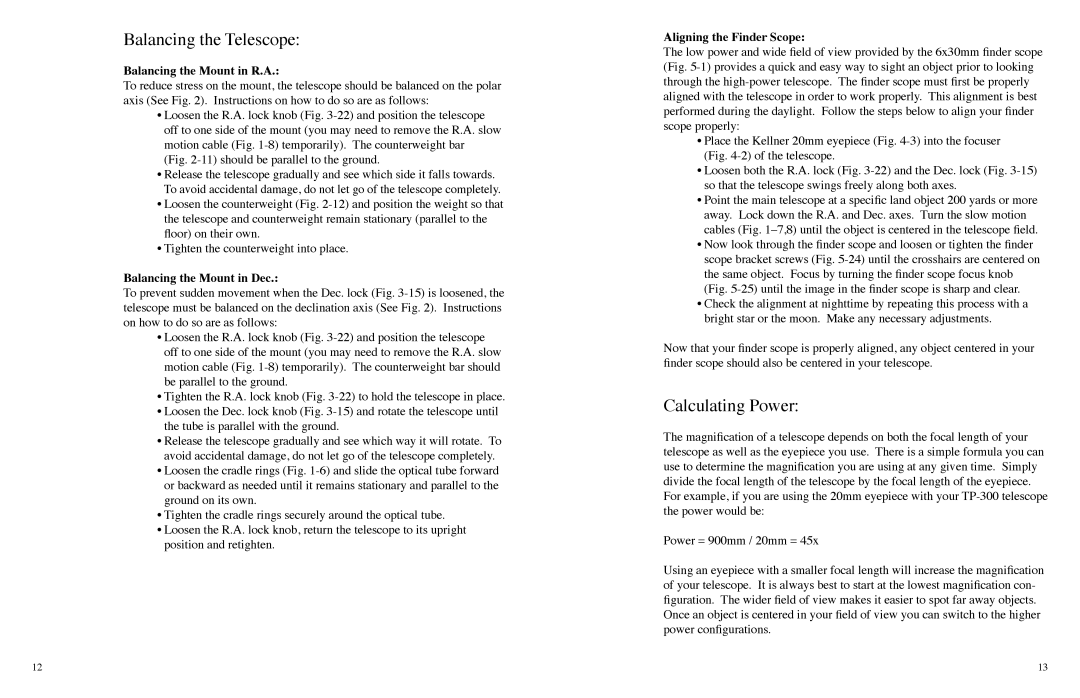Balancing the Telescope:
Balancing the Mount in R.A.:
To reduce stress on the mount, the telescope should be balanced on the polar axis (See Fig. 2). Instructions on how to do so are as follows:
• Loosen the R.A. lock knob (Fig.
• Release the telescope gradually and see which side it falls towards. To avoid accidental damage, do not let go of the telescope completely.
• Loosen the counterweight (Fig.
• Tighten the counterweight into place.
Balancing the Mount in Dec.:
To prevent sudden movement when the Dec. lock (Fig.
• Loosen the R.A. lock knob (Fig.
• Tighten the R.A. lock knob (Fig.
• Loosen the Dec. lock knob (Fig.
• Release the telescope gradually and see which way it will rotate. To avoid accidental damage, do not let go of the telescope completely.
• Loosen the cradle rings (Fig.
• Tighten the cradle rings securely around the optical tube.
• Loosen the R.A. lock knob, return the telescope to its upright position and retighten.
Aligning the Finder Scope:
The low power and wide field of view provided by the 6x30mm finder scope (Fig.
• Place the Kellner 20mm eyepiece (Fig.
• Loosen both the R.A. lock (Fig.
• Point the main telescope at a specific land object 200 yards or more away. Lock down the R.A. and Dec. axes. Turn the slow motion cables (Fig.
• Now look through the finder scope and loosen or tighten the finder scope bracket screws (Fig.
• Check the alignment at nighttime by repeating this process with a bright star or the moon. Make any necessary adjustments.
Now that your finder scope is properly aligned, any object centered in your finder scope should also be centered in your telescope.
Calculating Power:
The magnification of a telescope depends on both the focal length of your telescope as well as the eyepiece you use. There is a simple formula you can use to determine the magnification you are using at any given time. Simply divide the focal length of the telescope by the focal length of the eyepiece. For example, if you are using the 20mm eyepiece with your
Power = 900mm / 20mm = 45x
Using an eyepiece with a smaller focal length will increase the magnification of your telescope. It is always best to start at the lowest magnification con- figuration. The wider field of view makes it easier to spot far away objects. Once an object is centered in your field of view you can switch to the higher power configurations.
12 | 13 |
